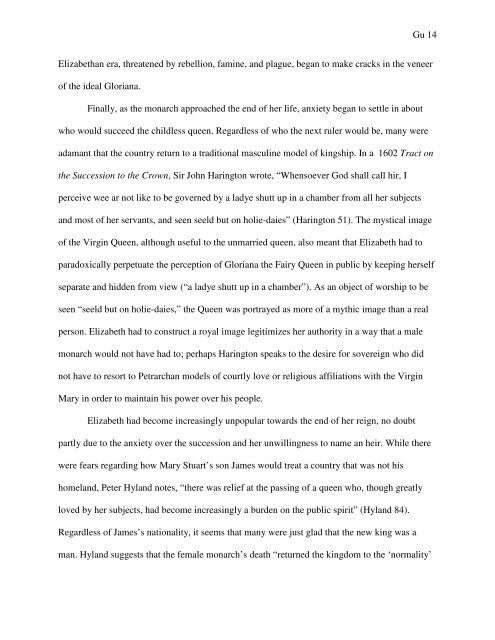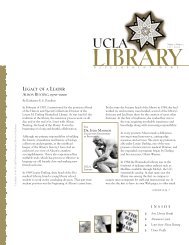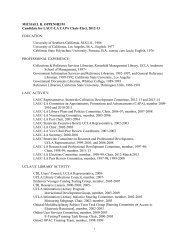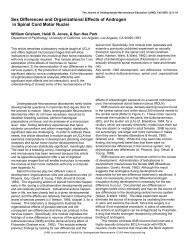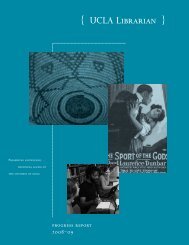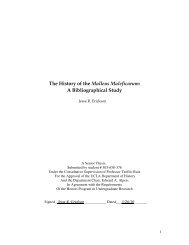Research Paper - UCLA Library
Research Paper - UCLA Library
Research Paper - UCLA Library
You also want an ePaper? Increase the reach of your titles
YUMPU automatically turns print PDFs into web optimized ePapers that Google loves.
Gu 14<br />
Elizabethan era, threatened by rebellion, famine, and plague, began to make cracks in the veneer<br />
of the ideal Gloriana.<br />
Finally, as the monarch approached the end of her life, anxiety began to settle in about<br />
who would succeed the childless queen. Regardless of who the next ruler would be, many were<br />
adamant that the country return to a traditional masculine model of kingship. In a 1602 Tract on<br />
the Succession to the Crown, Sir John Harington wrote, “Whensoever God shall call hir, I<br />
perceive wee ar not like to be governed by a ladye shutt up in a chamber from all her subjects<br />
and most of her servants, and seen seeld but on holie-daies” (Harington 51). The mystical image<br />
of the Virgin Queen, although useful to the unmarried queen, also meant that Elizabeth had to<br />
paradoxically perpetuate the perception of Gloriana the Fairy Queen in public by keeping herself<br />
separate and hidden from view (“a ladye shutt up in a chamber”). As an object of worship to be<br />
seen “seeld but on holie-daies,” the Queen was portrayed as more of a mythic image than a real<br />
person. Elizabeth had to construct a royal image legitimizes her authority in a way that a male<br />
monarch would not have had to; perhaps Harington speaks to the desire for sovereign who did<br />
not have to resort to Petrarchan models of courtly love or religious affiliations with the Virgin<br />
Mary in order to maintain his power over his people.<br />
Elizabeth had become increasingly unpopular towards the end of her reign, no doubt<br />
partly due to the anxiety over the succession and her unwillingness to name an heir. While there<br />
were fears regarding how Mary Stuart’s son James would treat a country that was not his<br />
homeland, Peter Hyland notes, “there was relief at the passing of a queen who, though greatly<br />
loved by her subjects, had become increasingly a burden on the public spirit” (Hyland 84).<br />
Regardless of James’s nationality, it seems that many were just glad that the new king was a<br />
man. Hyland suggests that the female monarch’s death “returned the kingdom to the ‘normality’


